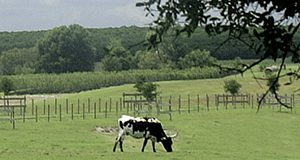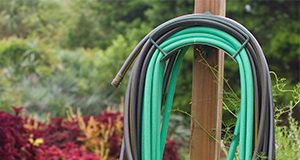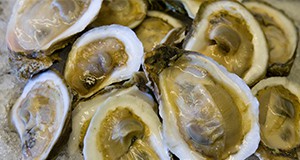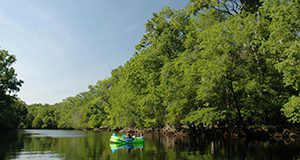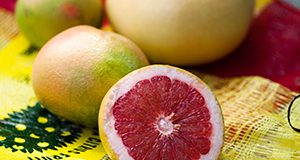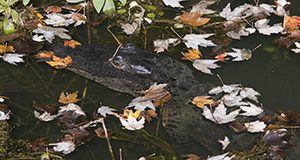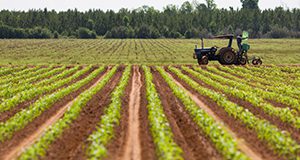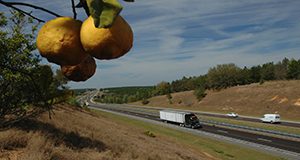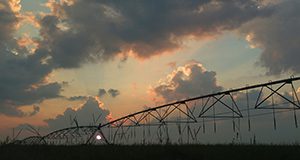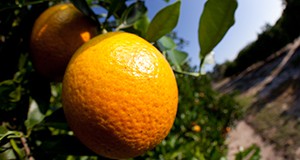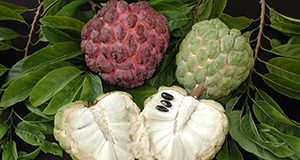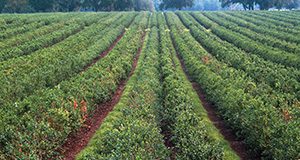Martin County, Florida has a rich agricultural history with farming and cattle ranching being important economic drivers since the early 1930s. Nevertheless, the county struggles to meet the balance between food supply and demand. Farmers often face challenges finding sizable, secure, well-paying markets, and the most consumers do not participate in local food transactions. This 4-page fact sheet written by William A. Messina, Jr., Lisa House, Yvette Goodiel, and Carol Albertsand published by the UF/IFAS summarizes two studies conducted to examine agricultural production in Martin County and its food processing, distribution and marketing systems and infrastructure to better identify potential constraints and opportunities for the local food system.
http://edis.ifas.ufl.edu/fe1071
Tag: Food and Resource Economics Department
Economic Contributions of Agriculture, Natural Resources, and Food Industries in Florida in 2016
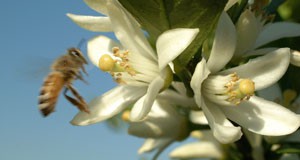
Collectively, the agriculture, natural resources, and food industries are significant contributors to the economy of the state of Florida. This 5-page fact sheet written by Christa D. Court, Alan W. Hodges, and Mohammad Rahmani and published by the UF/IFAS Food and Resource Economics Department outlines the economic contributions of these industries in calendar year 2016 to update previous reports from the Economic Impact Analysis Program and to provide current information for the purpose of informed public policy.
http://edis.ifas.ufl.edu/fe1055
Valuing Florida Water Resources: Households’ Willingness to Pay for Water
This 8-page fact sheet written by Tatiana Borisova, Fei He, Xiang Bi, Kelly Grogan, Tara Wade, and Syed Shah and published by the UF/IFAS Food and Resource Economics Department reviews various methods of examining the value of water availability for household needs. It may be helpful to water resource managers planning investments in water infrastructure to prepare for droughts as well as for analyzing spending on protecting source water availability, for example, by protection of aquifers or increasing the recharge of aquifers, the primary water source in Florida.
http://edis.ifas.ufl.edu/fe1068
Financial Risk in Off-Bottom Oyster Culture along Florida's West Coast
This 10-page fact sheet written by Russel Dame, Leslie N. Sturmer, Charles M. Adams, Richard Weldon, and Kelly A. Grogan and published by the UF/IFAS Food and Resource Economics Department explains how to assess the risks involved with off-bottom oyster culture, a method allowing for growing oysters in mesh containers above the sea bottom where they are protected from predation and from becoming buried in sediment.
http://edis.ifas.ufl.edu/fe1070
Economic Value of Florida Water Resources: Value of Freshwater-Based Recreational Experiences
This 8-page fact sheet written by Tatiana Borisova, Tara Wade, Xiang Bi, Kurt Oehlbeck, and Kelly Grogan and published by the UF/IFAS Food and Resource Economics Department is part 3 of the series “Economic Value of Florida Water Resources.” It uses Florida-based economic studies to provide natural resource professionals and interested citizens with information regarding the value of water-based tourism and recreation in Florida.
http://edis.ifas.ufl.edu/fe1067
Cost of Production for Fresh Market Grapefruit Grown in Indian River, 2017/18
This 4-page fact sheet written by Ariel Singerman and published by the UF/IFAS Food and Resource Economics Department presents the cost of production per acre for growing fresh grapefruit in the Indian River region during 2017/18. The methodology chosen to collect the data consisted of surveying growers directly to closely reflect growers' costs in the era of citrus greening. Typical users of the estimates in the fact sheet include growers and consultants, who use them as a benchmark; property appraisers, who use them to compute the taxes for property owners; and researchers, who use the estimates to evaluate the economic feasibility of potential new technologies.
http://edis.ifas.ufl.edu/fe1066
Who Is Interested in Purchasing Smart Irrigation Systems?
Water scarcity concerns have led to revolutionary new smart technologies for residential landscape irrigation, including evapotranspiration and soil-moisture sensor systems. The adoption of smart irrigation technologies into residential landscapes, however, has been slow. This 7-page publication written by Hayk Khachatryan, Alicia Rihn, Caroline R. Warwick, and Michael Dukes and published by the UF/IFAS Food and Resource Economics Department provides an overview of how different consumer groups perceive smart irrigation technology and the best promotions to encourage smart irrigation adoption in home landscapes. It is designed for landscapers, irrigation specialists, and marketing professionals who work with and are interested in promoting smart irrigation technologies to end consumers. Firms can use the results to tailor marketing strategies to target relevant customer segments and create promotions to encourage homeowners to adopt water-saving irrigation technologies.
http://edis.ifas.ufl.edu/fe1069
Valuing Florida’s Water Resources: Ecosystem Services Approach
This 6-page fact sheet written by Tatiana Borisova, Tara Wade, Xiang Bi, Kurt Oehlbeck, and Kelly Grogan and published by the UF/IFAS Food and Resource Economics Department defines the term “ecosystem services” and presents examples of ecosystem services provided by water resources. It explains three values people assign to water resources and presents a brief overview of the methods that economists employ to measure the value of water.
http://edis.ifas.ufl.edu/fe1064
Valuing Florida Water Resources: Prices of Waterfront Properties
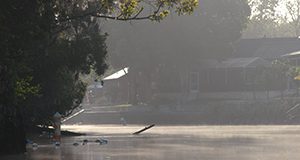
This 9-page fact sheet written by Tatiana Borisova, Xiang Bi, Tara Wade, and Kurt Oehlbeck and published by the UF/IFAS Food and Resource Economics Department explores the relationship between water quality and sale prices of waterfront properties, that is, the amenity value provided by water resources to waterfront communities. Being near to water to water generally increases the value of a residential property. However, poor water quality may decrease waterfront property prices. In other words, investments in restoring water quality can translate into increases in property value and tax collection.
http://edis.ifas.ufl.edu/fe1062/p>
Understanding Investment Analysis for Farm Management
Investment decisions are among the most important decisions growers make. In many cases, those investments are in capital assets such as establishing a new orchard or purchasing a new piece of equipment. The process for evaluating those investments is called investment analysis or capital budgeting. This 4-page fact sheet written by Julio Cruz and Ariel Singerman and published by the UF/IFAS Food and Resource Economics Department reviews net present value and the internal rate of return, the two main criteria for decision making when evaluating a decision to invest in a capital asset.
http://edis.ifas.ufl.edu/fe1060
Marketing Florida-Friendly Landscapes to Florida Homeowners

Useful to retail and landscape firms who are interested in encouraging FFL-related purchases and installations, this 3-page fact sheet written by Hayk Khachatryan, Alicia Rihn, and Caroline R. Warwick and published by the UF/IFAS Food and Resource Economics Department is an overview of how both DIY homeowners and those who hire professional landscaping service providers perceive the value of residential landscapes and the best methods to encourage them to purchase or install FFL.
http://edis.ifas.ufl.edu/fe1063
El Mandato del Dispositivo de Registro Electrónico, reglas de las horas de servicio e Implicaciones para los Transportistas de Productos del Sudoeste de Florida
El Mandato del Dispositivo de Registro Electrónico (ELD por sus siglas en ingles), se convirtió en mandato para vehículos motorizados comerciales (CMV) el 18 de diciembre del 2017. El 18 de junio del 2018, después de 90 días de extensión, el mandato también se aplicó a transportistas de productos. El propósito principal detrás del ELD fue asegurar el cumplimiento con los requerimientos de Horas de Servicio (HOS) por autotransporte y sus conductores. Este artículo se enfoca en el movimiento interestatal de propiedades (productos), and sus objetivos son: 1) revisar las reglas HOS; 2) clarificar las excepciones agrícolas a las reglas HOS; y 3) ofrecer una discusión preliminar a cómo los ELD podrían afectar a los productores del sur de Florida. Fritz Roka, Tara Wade, Luis Peña-Lévano, y Craig Sprouse. UF/IFAS Food and Resource Economics Department.
http://edis.ifas.ufl.edu/fe1058
Valuing Florida Water Resources: Water Use in Irrigated Agriculture
Water resources provide us with a variety of goods and services (altogether often referred to as ecosystem services or environmental services.) Part of a series entitled Economic Value of Florida Water Resources, this 5-page fact sheet written by Tatiana Borisova, Syed Irfan Ali Shah, Tara Wade, Kelly Grogan, and Xiang Bi and published by the UF/IFAS Food and Resource Economics Department assesses the economic value of the ecosystem services provided by irrigation water and shows the importance to agriculture of water resource protection and restoration.
http:edis.ifas.ufl.edu/fe1057
Cost of Producing Processed Oranges in Southwest Florida in 2017/18
This 4-page fact sheet written by Ariel Singerman and published by the UF/IFAS Food and Resource Economics Department presents a summary of the 2017/18 costs of production for processed oranges grown in southwest Florida. Typical users of these estimates include growers and consultants, who use them as a benchmark; property appraisers, who use them to compute the taxes for property owners; and researchers, who use the estimates to evaluate the economic feasibility of potential new technologies.
http://edis.ifas.ufl.edu/fe1056
Cost Estimates of Producing Sugar Apple (Annona squamosa L.) in South Florida
Because of the growing interest in alternative tropical fruit crops to diversify farm income, this 6-page fact sheet written by Fredy H. Ballen, Aditya Singh, Edward Evans, and Jonathan Crane and published by the UF/IFAS Food and Resource Economics Department offers an estimate of costs and returns associated with operating an established sugar apple orchard in south Florida.
http://edis.ifas.ufl.edu/fe1053
Crop Insurance Policies Available to Blueberry Growers in Florida
The main source of risk in crop production stems from the unpredictable nature of weather, pests, diseases, etc. By purchasing crop insurance, the farmer transfers part of the risk to an insurance company in exchange for paying a premium (which is the cost of purchasing crop insurance). In this 6-page fact sheet published by the UF/IFAS Food and Resource Economics Department, authors Robert Ranieri and Ariel Singerman describe and provide examples for the two main crop insurance policies available for blueberry farmers in Florida.
http://edis.ifas.ufl.edu/fe1054
Economic Contributions of the Forest Industry and Forest-based Recreation in Florida in 2016
The state of Florida is half woods, with 26,807 square miles of forestland. Our extensive natural and planted pine and hardwood forests are used for production of a wide variety of wood building materials, consumer paper and packaging products, chemicals, and renewable biomass fuels. In addition to industrial forest-related activity, public forestlands in Florida support a variety of recreational activities, attract a significant number of recreational visitors, and provide many non-marketed environmental or ecosystem services. This 4-page fact sheet written by Christa Dean Court, Alan W Hodges, and Mohammad Rahmani and published by the UF/IFAS Food and Resource Economics Department describes a study that analyzed the economic contributions of the forest industry and forest-based recreation activities to the state of Florida in 2016.
http://edis.ifas.ufl.edu/fe1051
Sample Productivity and Cost Estimates of Producing Longan (Dimocarpus longan Lour.) in South Florida
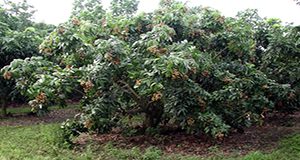
Interest is growing in minor tropical fruit crops. This 6-page publication written by Fredy H. Ballen, Edward A. Evans, Aditya Singh, and Jonathan H. Crane and published by the UF/IFAS Food and Resource Economics Department provides an estimate of the costs and returns associated with the operation of an established longan grove in south Florida. Information presented in this article was obtained through field interviews with growers and industry experts; it reflects a wide variety of production practices in small longan orchards of 1 to 4 acres and should help estimate the financial requirements of operating an established grove.
http://edis.ifas.ufl.edu/fe1049
The Electronic Logging Devices Mandate and Hours Of Service for Produce Haulers
Electronic logging devices, or ELDs, became mandatory for commercial motor carriers December 18, 2017. The compliance timeline for the produce industry was delayed with two 90-day waivers. On June 18, 2018, however, ELDs became mandatory for produce haulers as well. The primary purpose behind requiring ELDs was to ensure greater compliance with existing hours of service requirements by motor carriers and their drivers. This 5-page fact sheet written by Fritz Roka, Tara Wade, and Craig Sprouse and published by the UF/IFAS Food and Resource Economics Department reviews HOS rules, clarifies agricultural exceptions to the HOS rules, and offers a preliminary discussion as to how ELDs could affect south Florida produce growers.
edis.ifas.ufl.edu/fe1052
The Economics of Planting New Citrus Groves in Florida in the Era of HLB
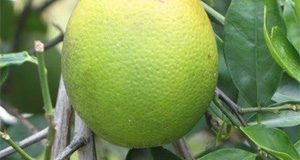
Citrus greening, or huanglongbing (HLB), is a bacterial disease that affects citrus trees’ vascular systems, limiting nutrient uptake. As trees become increasingly affected by the disease, they suffer premature fruit drop, the fruit harvested is smaller and misshapen, and the juice quality is compromised, all resulting in lower yield. To this date there is no cure or successful management strategy to deal with HLB. This 8-page fact sheet written by Ariel Singerman, Marina Burani-Arouca, and Stephen H. Futch and published by the UF/IFAS Food and Resource Economics Department summarizes the results of an analysis of three tree densities under different production and market conditions to determine which density is most profitable.
http://edis.ifas.ufl.edu/fe1050
